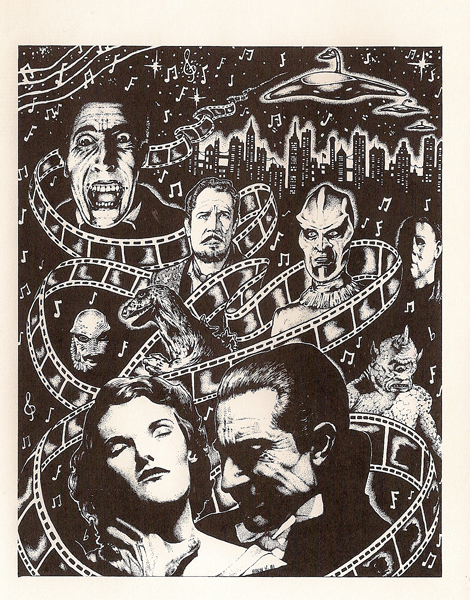Scoring Low-Budget Horror: An Interview with Film Composer Matt Cannon
August 27, 2022

Interview by Randall D. Larson
Matt Cannon is a horror film composer. His work ranges from various music projects, short films to full length feature work. His main composition style consists of digital and analog synthesizers, hearkening back to styles of John Carpenter, Tim Krog, Claudio Simonetti, Piero Montanari, Richard Band and Victor Spiegel.
Q: What led you to – and how did you get your start in – composing for films?

Matt Cannon: Just being fascinated with the process, specifically the low budget process. I remember listening to a score for a movie called KILLING SPREE [1987], directed by Tim Ritter. It’s a super low-budget horror film. Somebody put the score out on vinyl and the music is incredible, it’s has a John Harrison kind of feel to it, very CREEPSHOW. Listening to it, at that point, I wasn’t really thinking about anything like film scoring, because I was just getting into 80’s synthwave, pure electronic music, trying to take it a little more seriously, but when I heard that music it really make me think about it as something I could do. I love horror films and I thought, maybe if I give it a shot, something will happen. You never know. So I started making a bunch of temp tracks and put them into a file, and eventually I contacted Tim Ritter, just out of the blue. He was still working on low budget films, so I told him I loved his movies and if he ever needed a composer, I would love to work for him. I sent my music to him, and he liked it, but I knew he already had a composer, so it was more my first lesson in rejection! But we talk every now and then, and it’s more of a mutual friendship at this point.
That started me off getting into it, and I started putting my name out there. I contacted other filmmakers, and I started working on a couple of short films and that got me started scoring to picture. Eventually I started reaching out to other filmmakers, and I began getting work here and there. It was mostly communicating with people, and I made some great connections with some amazing filmmakers.
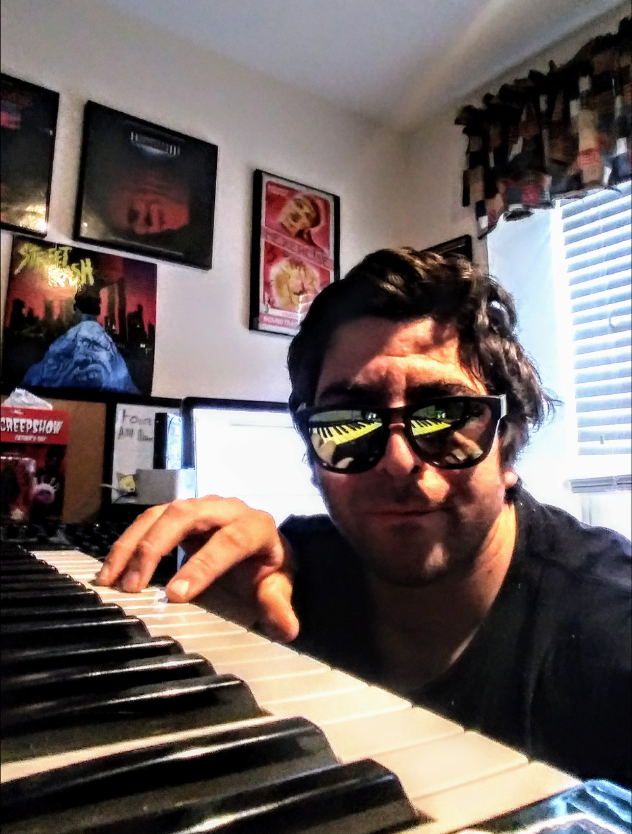
Q: IMDB shows your first credit for a horror film was called DEEP UNDEAD. What can you tell me about this project and how you scored it?
Matt Cannon: DEEP UNDEAD is a shot on video movie that was made in 2005, but it was never finished. I met the filmmaker, Dave Castiglione, at a horror convention/screening. He had a movie in there called BACKWOODS MARCY, and it was all shot on video, on a camcorder. I ended up really loving the film and talking to him after the screening, and we ended up really hitting it off. I loved BACKWOODS MARCY and I said I’d be available if he needed a composer for anything, and we grew a deep friendship after that. Eventually he told me about this movie, DEEP UNDEAD, that he never finished. He got it done in 2018 and he asked me to score it. The process for that was very low key. I didn’t have proper software, so I used Ableton. I’d watch the movie and then do the tracks in there and I would take everything and put it into iMovie, which is horrible, in my opinion; but that’s what I was doing before getting Logic, which is what I’ve been using ever since. It was a long process – I would have to take each track from Ableton and then throw it into iMovie. It’s a fun film. I think what I learned from was, if I want to do this seriously I was going to have to research and invest in better software!
Q: Horror is a genre that a lot of people starting out tend to gravitate to, but in your case you’ve been a horror film fan for a long time. What was it like to now be able to score those types of films that you used to just watch?
Matt Cannon: It’s amazing – and difficult at the same time! I think I’ve started every project thinking how am I going to do this? I’m always excited about the process, but once I start it’s like looking at the blank page, you really just have to press forward and do it. Looking at horror scores, you realize, at a basic level, they’re no different than a drama score or a comedy: they all have a relationship with each other. Doing a horror score, and really experiencing it, you’re using a lot of tension and finding different ways to express characters. I think horror scores are always going to be tough to do; it’s about what you bring to it, what you feel from the product and the film that’s being presented to you. What’s especially important is the relationship you have with the director or producer, whoever has the most investment in this idea; their input is going to be a lot more interesting than just going at it yourself. It’s good to have a director who does know how to communicate, but even if not you’re still getting ideas from them, or details that give you time to be imaginative and figure things out in your head.
Q: You scored the comedy horror film MILFS VS ZOMBIES. How did you navigate its comedic and horror elements?

Matt Cannon: That was a rescore. It had two different composers on it, and the director asked me, in early 2020, to score it. That was difficult. I was really just trying to have fun with it, which is what I try to do with these kinds of films – to make myself enjoy the process, trying to get it done and into the can. The thing with MILFS VS ZOMBIES was that I did try to be funny. I love the score, personally, but I don’t think it’s an approach I would want to do next time. My life lesson on that would be the way I approached SPIRIT ANIMAL [2018] – there were funny parts in it, but the music isn’t trying to be funny. I was thinking of a movie like TROLL 2 – it’s one of the worst movies ever made, but it’s a comedy that also takes itself seriously, and I approached SPIRIT ANIMAL like Carlo Maria Cordio did in TROLL 2. Scoring comedy depends how the film is being presented. If it’s a parody, it’s meant to be that way and you might have to do those kind of things, you’re doing cues for the characters, you’re defining moments where someone enters a room and so in, and there you’re adding to the humor of the parody.
Q: What electronic techniques do you favor in scoring these films and what are the tools you utilize in creating their music?
Matt Cannon: Mainly it’s my software-based synthesizer and hardware. I use a lot of stuff from Arturia, UVI, Novation Mininova, TAL Plug-ins (sampler, TAL-U-NO-LX), Sonic Projects, Steinberg Plug-in (Haleon Symphonic Orchestra). I still use a lot of that stuff today. It’s really unique, wild, fun stuff that is always inspirational.

Q: You scored Todd Sheets’ comedy horror film CLOWNADO in 2019, and then FINAL CALLER in 2020. What did you find most interesting about scoring these projects?
Matt Cannon: Those were all musical department films. Todd’s awesome, a very sweet guy – he made a shot-on-video movie back in the 80s called GOBLIN, it’s amazing – it’s so bad but so great! He contacted me. He just came out of the blue and said “I love your music, would you like to score this film I have called BONEHILL ROAD, and ever since then we’ve been working off and on. The way he does it is a little bit more musical department –I’ll make a bunch of tracks and he’ll just take some of them and add them to the score. With CLOWNADO only a few of my tracks made it into the film, because he has other people who do music for him as well, so I don’t always know which pieces of my music cues are going into the movie. I haven’t seen FINAL CALLER yet, but I was told that most of my music is in that movie.
Q: You mentioned SPIRIT ANIMAL. What can you tell me about that project?
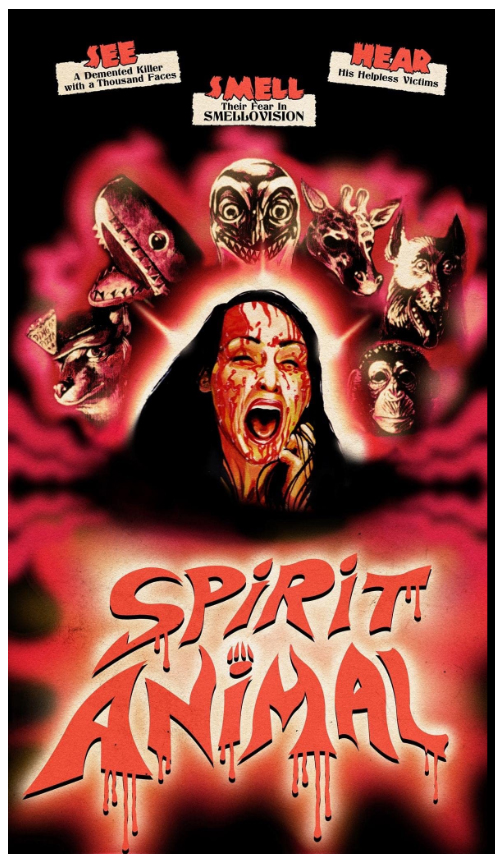
Matt Cannon: With SPIRIT ANIMAL, Madeline Deering was the director. I met her through a horror page called Grossfest, which also has a film festival/convention out in Pittsburgh. She was posting on one of the pages about her movie SPIRIT ANIMAL, which at the time was just a trailer, and it blew my mind. I thought it was such an amazing movie and it was all shot on video. A lot of my experience so far has been a mix of shot-on-video directors and film, so it’s so crazy how I’ll go from doing someone’s home-made movie to someone who has this professional crew and is making a very polished movie! I’d directed a short movie called HEXERCISE [2018], which was screening at Grossfest, and I met with Madeline Deering there and told her, “I loved the trailer of your movie and if you don’t have a composer I would really love to work with you!” She watched HEXERCISE and loved it, and then later she messaged me through social media and said “Yes, I would love for you to score SPIRIT ANIMAL!” She messaged me again after three months saying “I’m still shooting some stuff, and I want you to score, so I’ll get the material over to you soon as we’re done.”
Then two months later she has a premiere coming up at the end of the month, and from what I remember she didn’t tell me to begin scoring it yet since that premiere was just going to be for the cast and crew, so I went about my business. Then she messaged me two weeks before the premiere going, “hey, do you have the material?” I said “I have nothing. I have no music!” She said “Well, if you have anything it would really help, even if it’s just stuff lying around!” So I said, “I’ll make you a score, give me nine days!” What I did with that is I chose from a very minimalist amount of instruments and made the theme with a motif, and from there built everything from the ground up. I would break the film into fifteen minute segments: I would sit and work for maybe three hours a night for those nine days, trying to get at least ten or fifteen minutes done every night, so I’d make sure I had a nice bulk done each night so I knew I was getting material made for this movie, while fighting sleep! It was really a great process for me, and it taught me that even though sometimes less is more, you don’t need a whole orchestra of instruments to write a score, especially when you’re dealing with a movie like this, which is very raw, homemade. It added to the feel of that film and made you feel that this movie would have existed in 1990, the way the score was made.
Q: Which synths did you use to create that score?
Matt Cannon: I made it with a 1994 Roland JV-1080, a 1987 Roland D50 – these are both emulators. I used some very minimalist synthesizers like the 90s Rompler, that added to the feel of the film. If a film’s set in a certain era, I’ll usually use synthesizers that were used around then and try and come up with a toolbox that I can choose a set of tools from. I used this one patch from the D50 called “Digital Native Dance,” it was used by Cordio; he would use this patch all the time. I love that patch – it’s kind of an overused patch, and when you hear it other synthesizer freaks definitely know where it’s coming from.
Q: You worked with Joseph Russio, the effects, producer, editor and co-writer on SPIRIT ANIMAL, in 2021’s BEYOND DARK DREAMS, a 3-part anthology film. What can you tell me about this score?

Matt Cannon: Joseph Russio had started this film prior to SPIRIT ANIMAL, and got it finished just afterwards. From his listening to SPIRIT ANIMAL and knowing how I work, he wanted me to do BEYOND DARK DREAMS. I approached that film very differently than SPIRIT ANIMAL, a lot more seriously, I would say. Joseph wanted the score to be dark and atmospheric and very moody, like the film itself. My main objective was to write a score that would scare you listening to it, as much as it would also be a beautiful score. Joseph gave me carte blanche to do whatever I wanted to do with the score, so I reached into whatever I felt was scary to me – when you’re sitting alone and you hear very bizarre noises, or things that are unnerving. He had a teaser prior to my scoring it, and from watching it I just knew I had to write something scary. It can’t just be stings and stuff like that – I have to write something that’s going to make you think about it afterwards. Each of the three stories had a different feel, so I approached each segment differently but with the same intention of making sure the music was unsettling. It was supposed to be like an Argento/giallo inspired kind of film. I listened to a lot of Goblin around then. A lot of the segments also reminded me of THE SHINING, and I remember reaching a lot into Wendy Carlos’ music for Kubrick. So it was really trying to find that atmosphere. That was a fun score to do. I’m hoping to get a release of that down the road.
Q: You scored the horror thriller FORCE TO FEAR (2021), directed by Chad Bruns and Zane Hershberger and produced by Justin M. Seaman. What can you tell me about coming into this project and working with them on the score?

Matt Cannon: I knew Zane from hearing about a movie that he and Justin did, called THE BARN [2016] and they just started shopping around festivals and conventions. I watched a trailer for it and I loved it, and, again, these were guys that I would love to work with, so I reached out. I sent ten tracks to Justin and Zane and they loved my work; the BARN was done but they said they would keep me in mind for future projects. I did meet up with them at a convention and we all meshed real well and had a great conversation about movie scores, and Zane said he was working on an anthology movie with another director called 10/31 [2017], so he asked me to do that a couple of months later. 10/31 was the very first, score-to-picture movie I’d done besides the short student projects I did back when I first started. My segment, “Trespassers,” was only fifteen minutes long, but it was great learning from Zane because he was very communicative and a lot of that went to FORCE TO FEAR.
FORCE TO FEAR was the project he did after 10/31, and he wanted to have me score it. It was an action/horror hybrid and I had no idea how to do action movie scores. I hadn’t even watched a lot of them – the only ones I really liked were THE RUNNING MAN [1987] and SPEED [1994]. We worked the same on FORCE TO FEAR as we did in “Trespassers.” He would send me music he really liked and wanted me to listen to and get inspired from. Chad was more of the co-director and I didn’t interact with him as much, but I knew Zane had much more of the vision of what he wanted for the music – it should be much more synth oriented, in a realm of something like AVENGING FORCE [1986], like the early Canon movies. He gave me a list of movies to watch. DANGEROUS GAME [1988] was another, that was one of his biggest inspirations for FORCE TO FEAR, but listening to that score wasn’t really something that spoke to me as much as movies like DEADLY PREY [1987] did. A lot of the percussive elements that went into FORCE TO FEAR were based on that film’s score. Other stuff was kind of John Carpenter inspired. The very opening had much more of a horror feel to it.
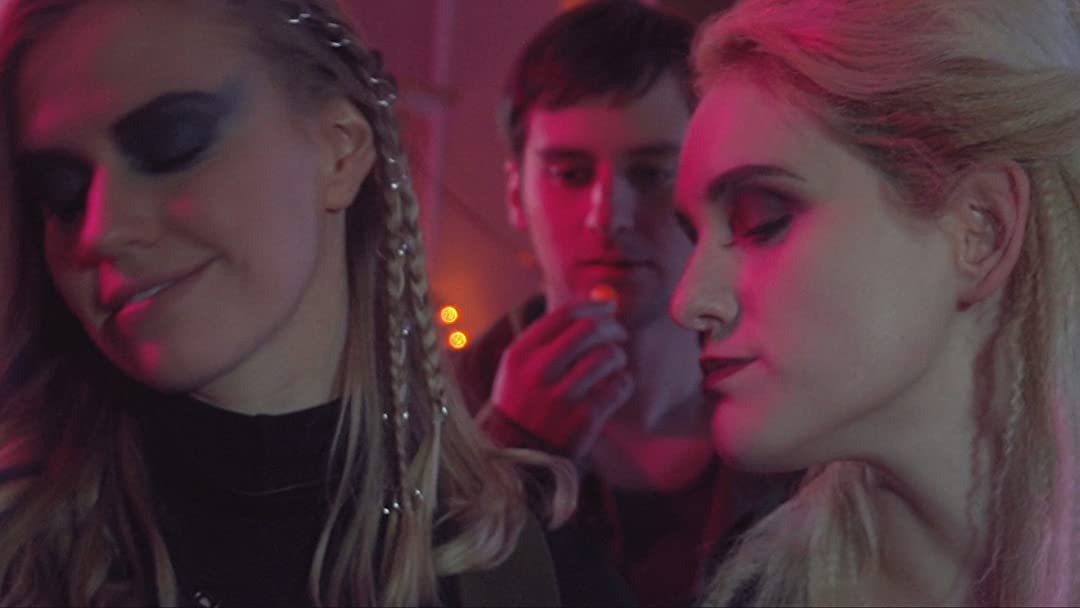
As in “Trespassers,” I would constantly share my music process with Zane, and we had a back-and-forth like, “Hey, what do you think of this?” and he would comment on what he thought was good and what he felt wasn’t, so it was a process that built over time as we talked. If he wanted something specific he would usually send me videos. I like directors who don’t know exactly what they want! So the first part of the film was much more horror, and after that I forgot to add the action element to it! I remember telling him, “I think I made the first part much more horror, but horror thriller, more moody, but that’s kind of a good thing because it doesn’t get the action until probably about 25-30 minutes in. That’s when he asked me to watch AVENGING FORCE. I’d never seen it, and so a lot of the music that came into the second half of FORCE TO FEAR came from seeing that and hearing the music. The orchestral music had the guitar bends and solos you hear throughout, which were inspired from that.
It took me four months to do the score, so I had a lot of time, and I used it as wisely as I could. After about three months I gave him the score, and he loved it but, about two or three days later, he said “I’ve got some notes for you!” and he gave me three-pages of notes to do re-do’s on. And that was amazing, I think a lot of low-budget film directors just get the score, they take it, and they’re like, “ok the movie’s in the can.” But Zane paid so much attention to the score and he knew what he wanted it to be. Most of his notes were sound department stuff – he wanted there to be stings here and there. He’s the king of stings – if somebody moves crazy in one of his movies I have to do a sting, if there’s a jump scare, I have to do a sting! It’s fun. Working on his movies are so great.

FORCE TO FEAR was a lot of work. I didn’t know about matching the rhythm of a cue to a fight, so all the fight music in the film was originally one track, and I would put it against the scene, working on one fight scene, and have him watch it. He said “Can you slow it down when they calm down for a second and then things start kicking back up again, and when it gets darker here can you change the tone there?” and I realized that it worked. I went back and Frankensteined it – I took it apart and put it back together again, and when you hear the fight tracks in the film, they were all synchronized to a ballet to rhythm changes, so when they would slow down the music would slow down, and when it would speed up the music would speed up. That was something I learned from FORCE TO FEAR that I hadn’t encountered before, not having done an action movie until this one. Doing action film scores today is about rhythm, about how to control the rhythm of a scene, and what to do and what not to do.
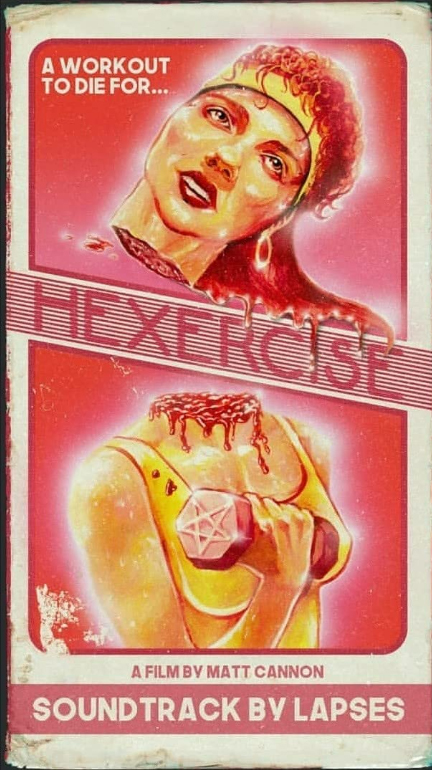
Q: In addition to scoring the anthology film HORRORTALES.666 Part 2 [2021], you were also a co-director. I see you also directed and wrote the short 2018 film HEXERCISE. What did this double responsibility entail and what are your ambitions towards further filmmaking functions?
Matt Cannon: With HORRORTALES.666 Part 2, I made a short film called OPEN HOUSE for the anthology; HEXERCISE is a separate entity, a short film I made. I had a great time doing it, but I don’t really feel I have many ambitions as a director. HEXERCISE was a very hard process to make, especially when you don’t have very good social skills! I’m extremely shy and nervous around people, so I had to try and shed that and become a director for a little bit, but it was really just me trying to get the experience and learn from friends. I directed those and I did score work for all of them, but I don’t think I’ll ever make another short film. I had a great time doing the score work on them, and I’m really proud of them. I really am. But I don’t think that taking on the responsibility of other people working on a film is something I want to do. The process was hard. I still don’t mind trying to screen-write.
Q: As a director, did you give yourself your own score notes? [pause] I’m kidding!
Matt Cannon: [laughs] It’s kind of funny, because HEXERCISE was scored before the movie was even made. I made the movie around the music, kind of like a music video. It was unique and it was great to do, but it was so bizarre and otherworldly for me. Bossing people around me is way beyond my character!

Q: What’s coming up for you next that you can talk about?
Matt Cannon: I’m working on another Madeline Deering movie called BATHTUB SHARK ATTACK. It’s going to be amazing and I’m so excited to get back to work with her. And then there’s another one called THE BLUE HOLE, which is for Dave Castiglione who did DEEP UNDEAD. He just finished it and it’s being edited now, and I’m waiting for that to come into my possession. And then there’s another one, I think it’s called SILENT NIGHT, DEADLY NIGHT III, which I don’t think has any relationship to the originals, but the director found out who I am from a friend and asked if I wanted to score it, so I’m waiting for that to come to my door. So I’ve got lots to come, plus some other stuff I can’t speak about at the moment.
For more information on the composer, see his bandcamp page here, and sample some of Matt’s film music on YouTube.
Matt’s score for FORCE TO FEAR has been released on CD by Howlin’ Wolf Records. See details here.
Watch the trailer to FORCE TO FEAR, with a portion of Matt Cannon’s score:




